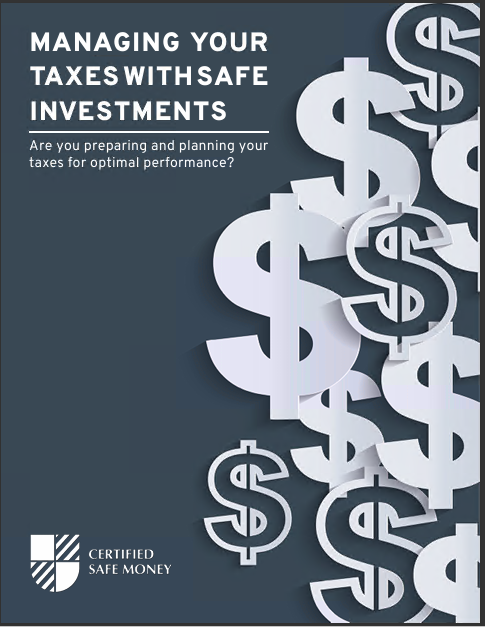Key Takeaways
-
Fixed Index Annuities (FIAs) offer safety from market downturns but come with limitations and hidden complexities that can reduce your long-term growth potential.
-
Before committing, you should carefully evaluate surrender charges, caps, participation rates, and liquidity restrictions to determine if they fit your retirement strategy.
Looking Beyond the Sales Pitch
When you first hear about Fixed Index Annuities, the idea sounds appealing: protection from market losses while still allowing some participation in market gains. In a world where retirees seek both security and growth, this promise seems like the perfect balance. Yet, when you dig deeper, you discover that FIAs carry restrictions and drawbacks that are not always highlighted upfront.
Limited Growth Potential
One of the biggest challenges with FIAs is their restricted growth potential. Unlike investing directly in the stock market, your returns are tied to an index but capped by the insurance company.
-
Caps: Many FIAs place a maximum limit on how much you can earn annually. For example, if the index rises by 12% in a year but your annuity has a 5% cap, you only receive 5%.
-
Participation Rates: Even when caps do not apply, you might only receive a percentage of the index’s growth, such as 50% or 70%.
-
Spreads and Margins: Some contracts deduct a percentage from the index gain before calculating your credited return.
This means that while you avoid losses, you also leave significant growth on the table.
Long Surrender Periods
FIAs typically lock you into long surrender schedules, often ranging from 7 to 15 years. During this time, withdrawing more than the allowed free-withdrawal amount (often 10% annually) leads to steep penalties.
-
Early Withdrawals: Penalties can start above 10% in the first year and gradually decrease over time.
-
Liquidity Concerns: If you need access to funds for unexpected medical bills or family emergencies, these surrender charges can restrict your flexibility.
This makes FIAs better suited for long-term commitments rather than flexible investment planning.
Complex Fee Structures
While FIAs are often marketed as “no fee” products, the reality is more nuanced. The base annuity may not charge explicit fees, but optional features like income riders or enhanced death benefits often carry annual charges.
-
Rider Costs: Income riders can reduce your credited return by 1% or more annually.
-
Hidden Opportunity Costs: Even without explicit fees, the limits on returns act as an indirect cost to you.
When compared with other safe investments like bonds or certificates of deposit, the costs and restrictions of FIAs become more visible.
Interest Rate Sensitivity
FIAs are issued by insurance companies that invest in bonds to back your contract. Because of this, interest rate environments play a significant role in shaping the terms offered.
-
Low Interest Environments: In periods of low rates, such as in the years before 2023, FIAs tend to have lower caps and participation rates.
-
Rising Interest Environments: When rates increase, newer contracts may offer better terms, but those who locked into older contracts may be stuck with less favorable features.
This creates a mismatch between your expectations and the economic environment at the time of purchase.
Payout Restrictions
If you decide to convert your FIA into a stream of guaranteed income, the payout options may not be as flexible as you expect.
-
Annuity Payments: Once you annuitize, your decision is irreversible. You cannot reclaim your lump sum.
-
Beneficiary Restrictions: Depending on your payout choice, beneficiaries may receive limited or no remaining funds after your death.
This lack of flexibility makes it important to weigh income needs carefully before making that commitment.
Market Illusion vs. Reality
FIAs are often presented as a way to “participate in the market without risk.” In reality, you are not directly investing in the stock market. Instead, you are buying a contract that credits interest based on a formula linked to a market index.
-
No Dividends: Unlike holding stocks, you do not receive dividends, which historically make up a large portion of long-term returns.
-
Formula-Driven Returns: Insurance companies control the formula, which they can adjust annually, limiting transparency and predictability.
This makes FIAs fundamentally different from traditional market investments, despite the marketing comparisons.
Inflation Risk
FIAs are designed to preserve principal, but they may not keep up with inflation over decades.
-
Capped Returns: Your growth may lag behind long-term inflation averages, especially during high-inflation periods like 2022.
-
Fixed Payouts: If you annuitize without inflation protection, your income remains fixed, eroding purchasing power over time.
Inflation risk is one of the most understated drawbacks of FIAs.
Tax Considerations
While FIAs grow tax-deferred, the tax treatment upon withdrawal is less favorable compared with other investment vehicles.
-
Ordinary Income Tax: Earnings are taxed at ordinary income rates, not lower capital gains rates.
-
Last-In, First-Out (LIFO): Withdrawals are typically considered earnings first, meaning they are fully taxable until you have withdrawn all gains.
This can result in higher-than-expected tax bills during retirement years when cash flow is critical.
Overemphasis on Safety
Many people buy FIAs for their principal protection feature. While this safety is valuable, it can come at the cost of lower overall returns and limited liquidity.
-
Missed Opportunities: Over 10 to 15 years, even modestly higher returns from other investments can compound into significant differences.
-
False Sense of Security: Believing your money is fully “safe” can distract from the limitations that affect your financial flexibility.
When FIAs Might Still Work
Despite these drawbacks, FIAs may still have a place in your portfolio under specific conditions:
-
You want a portion of your assets shielded from market downturns.
-
You are comfortable locking up money for 7 to 15 years.
-
You value tax-deferred growth even with its limitations.
The key is recognizing that FIAs are not one-size-fits-all solutions.
Evaluating Your Next Step
While FIAs can look appealing at first glance, the restrictions on growth, long surrender schedules, and complex structures make them less flexible than many other safe investments. If you are considering adding them to your portfolio in 2025, you need to weigh the safety they offer against the opportunities you may give up. Your decision should depend on your retirement horizon, liquidity needs, and tolerance for inflation and tax impacts.
To ensure you make the right choice, consider reaching out to a licensed financial professional listed on this website. They can walk you through the details, explain the fine print, and help determine whether FIAs align with your broader retirement strategy.













